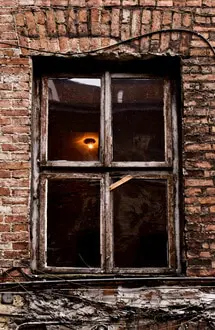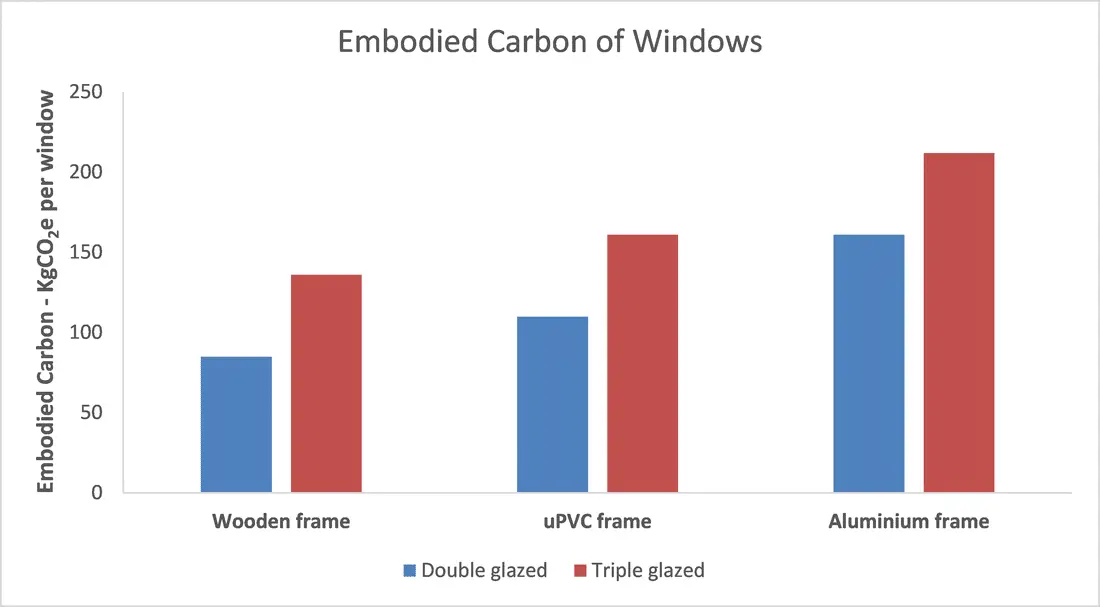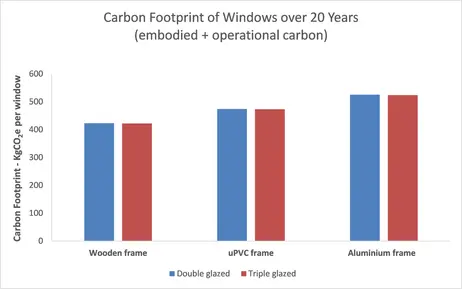Blog, Carbon Footprint, Embodied Carbon, Energy, Sustainability
Double or triple glazing? All pane and no gain?
Whether you are designing a new building, completing an extensive refurbishment or just looking to replace the windows in your home with more energy efficient windows then you will be offered the choice of double glazing or triple glazing. But is this a good environmental choice?
Intuition tells us that triple glazing should have a lower carbon footprint. The additional panel of glass in the window provides an extra barrier against the cold air outside. However, this extra layer of glass comes with an additional embodied carbon footprint penalty.
Embodied carbon is the carbon footprint of a material. It considers the amount of carbon dioxide emissions (CO2) that are released to extract, refine, transport and process the materials in the window. To compare the carbon footprint of double glazing versus triple glazing we therefore need to consider both the embodied carbon of producing a window as well as its operational carbon in use.
We recently explored the embodied versus operational carbon footprint of windows in an article for Building Magazine, written jointly with Inspired Efficiency. It was titled “Not so clear: There is more to a low-carbon window choice than whether you opt for double or triple glazing”. This blog builds upon the original article.
Carbon footprint of windows
Taking an average domestic window (assumed 1770mm x 1200mm) our research showed that wooden frames are, as expected, the lowest embodied carbon option, at 85 kg CO2e per double glazed window, this is followed by uPVC windows at 110kg CO2e per window and finally aluminium at 161 kg CO2e per window. The triple glazed windows therefore have an embodied carbon footprint penalty, as shown in the chart below.
The higher embodied carbon footprint will need to be compared to the lower operational carbon footprint so that we can see if it pays back. Our assumptions on operational carbon are outlined further in the original Building Magazine article and the results are shown in the Table below.
The results showed that for all frame types it takes almost 20 years for triple glazing to pay back the additional embodied carbon. This is on a like for like frame comparison, for example uPVC double glazing compared with uPVC triple glazing. This is beyond the lifetime of most uPVC windows and therefore is not quite the obvious choice that you would think.
The results also reveal a more interesting insight. Frame type is more important than the choice of double glazing or triple glazing. The chart below shows the total carbon footprint over 20 years (embodied carbon + operational carbon). This is the time frame it took for the savings in operation to payback the additional embodied carbon footprint, as below.
Double vs triple glazed windows
Taking a closer look at the chart reveals that double glazed wooden windows outperform triple glazed uPVC windows over 20 years. Likewise, double glazed uPVC windows outperform triple glazed aluminium framed windows. This also means that wooden glazed windows outperform both uPVC and aluminium options. Over this 20 year timescale the choice of double or triple glazing becomes almost irrelevant (from a carbon footprint perspective). The choice of framing material is therefore a more important factor if trying to reduce the total whole life carbon footprint. This relationship holds true for any realistic lifetime of the windows. For example, if you were to choose aluminium triple glazing over uPVC double glazing it would take over 40 years for the aluminium triple glazed windows to be the lower carbon option. This is beyond the lifetime of the window. Likewise, if you were to choose uPVC triple glazing over double glazed wooden windows it would take over 50 years, which is well beyond the life of any window money can buy.
Of course carbon footprint is only one factor to consider. Other factors include cost (although many studies indicate that triple glazed windows don’t payback their additional price), thermal comfort and noise. But next time you choose new windows please consider a high performance double glazing unit and the type of frame. In the process you could save a healthy amount of carbon footprint as a result.
What do you think? If you like this post please consider sharing it on social media using the share buttons, signing up to our Newsletter to receive future blogs by email, or following Craig on Twitter or LinkedIn.




